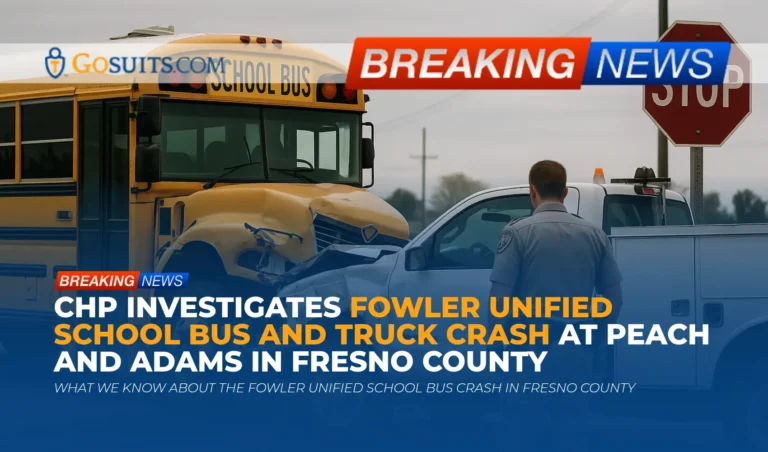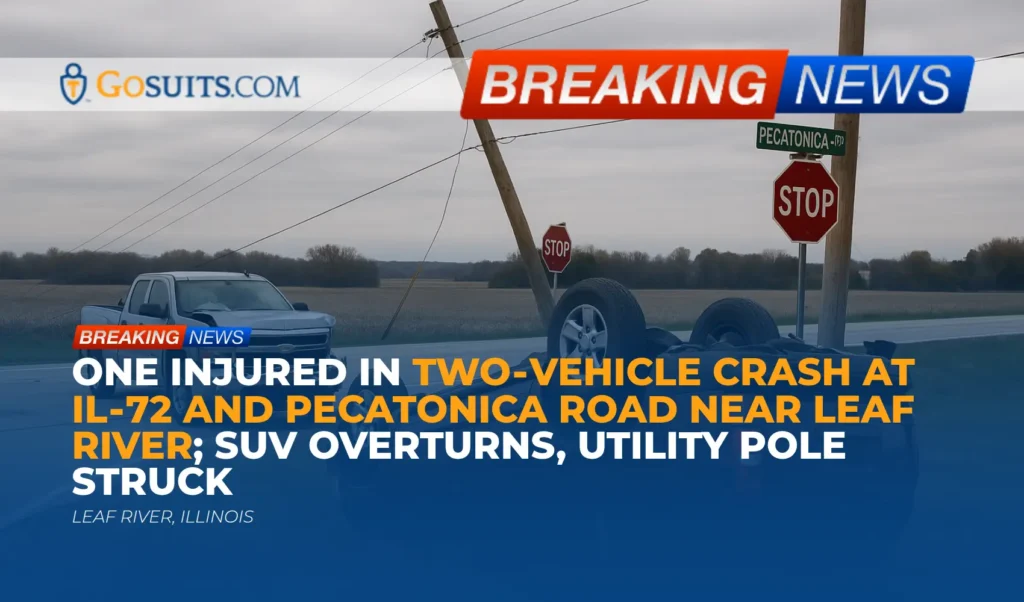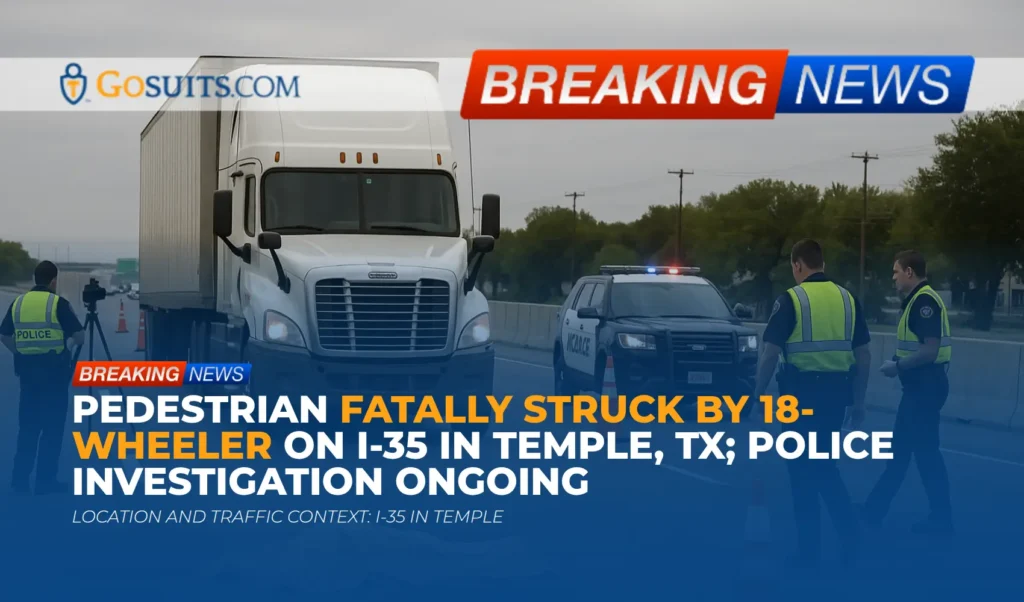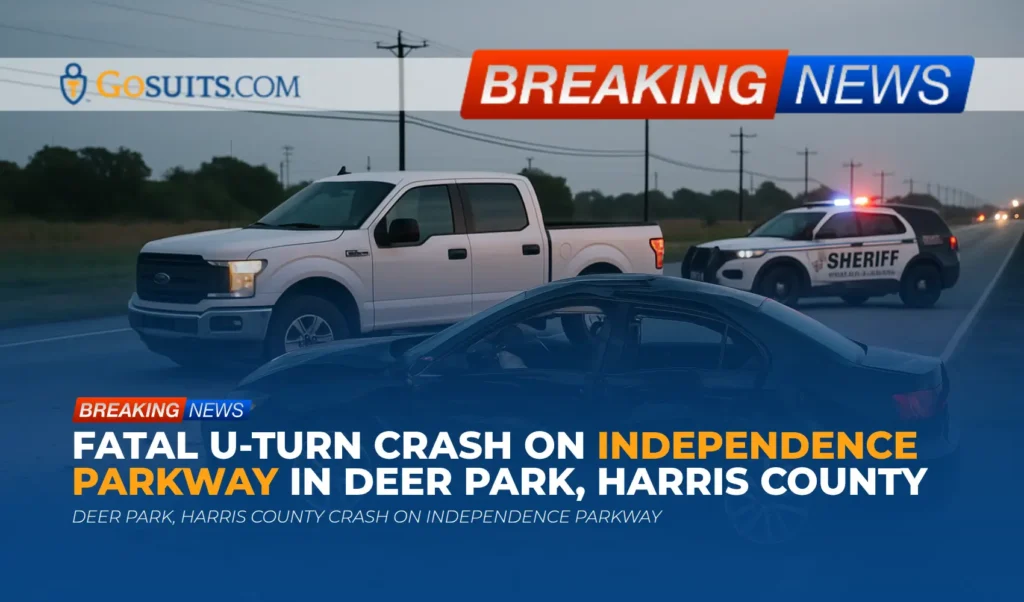- What we know about the Fowler Unified school bus crash in Fresno County
- California rules that may apply at a stop sign controlled intersection
- Injuries reported and why medical evaluation matters for children
- How crash investigations proceed in California and what evidence may exist
- Key records to request and where to obtain them
- Potential civil liability and rights after a school transportation collision
- Insurance issues and common pitfalls after a bus and truck collision
- Deadlines and time limits that can affect claims in California
- Community safety and prevention considerations
- Why acting promptly matters
- Commentary from Gosuits Fresno County, California Personal Injury Attorney
What we know about the Fowler Unified school bus crash in Fresno County
According to initial information from the California Highway Patrol, a school bus affiliated with Fowler Unified School District and a service truck were involved in a collision at approximately 5 p.m. on a Monday at the intersection of Peach and Adams in Fresno County. Four children on the bus reported pain and were transported to a hospital as a precaution. Both drivers also sustained injuries. CHP reported that the truck was traveling on Adams and that the school bus pulled in front of the truck from a stop sign. The collision remains under investigation.
Out of respect for privacy, no student names are included here. Early reports often change as investigators gather more evidence, measure the scene, and interview witnesses. Families should expect that formal findings will be contained in the official collision report prepared by the investigating agency.
School bus collisions raise understandable anxiety for families and the broader community. Even where initial reports describe injuries as minor or precautionary, symptoms can evolve, particularly for children. It is appropriate to approach follow-up care and documentation with care and patience.
California rules that may apply at a stop sign controlled intersection
Stop controlled intersections involve specific right of way duties for drivers entering from a stop sign and for traffic on the through roadway. While the final legal conclusions in this incident will rest on the facts established by CHP, the following California rules frequently apply to this type of scenario:
- Yielding at stop signs. A driver approaching a stop sign must stop at the marked limit line or, if none, before entering the crosswalk or intersection, and must then yield the right of way to any vehicle that has entered the intersection or is approaching so closely as to constitute an immediate hazard. See California Vehicle Code sections 22450 and 21802.
- Duty of due care. All motorists, including operators of heavy vehicles such as service trucks and school buses, must use reasonable care for the safety of others on the road. This includes scanning for cross traffic, proceeding only when safe, and adjusting for conditions like sun glare, traffic congestion, or limited sight distance.
- Special considerations for school buses. School bus drivers have heightened operational protocols, including strict loading and unloading procedures and reporting requirements after a collision. Although school buses are designed with extensive safety features, their large size and limited maneuverability require conservative gap selection when crossing or entering a roadway.
Right of way issues turn on details such as visibility, speed, stopping distances, vehicle positioning, and the precise moment each vehicle entered the intersection. The collision report and any available diagrams or measurements help clarify those details.
Injuries reported and why medical evaluation matters for children
CHP noted that four children complained of pain and were transported to a hospital as a precaution. Even when symptoms initially appear mild, it is wise to monitor pediatric patients closely. Children sometimes underreport symptoms, and certain injuries may not be immediately apparent.
Common collision related conditions for child passengers can include:
- Soft tissue injuries. Strains and sprains of the neck, shoulders, and back, often presenting with delayed stiffness or soreness.
- Concussion or mild traumatic brain injury. Children may show subtle signs such as headache, irritability, sleep changes, dizziness, or concentration difficulties. The Centers for Disease Control and Prevention provides guidance about recognizing and responding to concussions in children through its Heads Up program at cdc.gov/heads-up.
- Psychological distress. Anxiety, sleep disturbances, or reluctance to ride the bus can follow a stressful transportation incident and deserve attention and care.
- Bruising and abrasions. Especially where there are sudden stops or lateral forces, even if occupants were seated.
Trust medical guidance on follow up evaluations, rest, and a safe return to normal activities. Documenting symptoms and care is important for health reasons and to create a clear record of what was caused by the crash.
How crash investigations proceed in California and what evidence may exist
Injury collisions on public roads in Fresno County are typically investigated by the California Highway Patrol or the local sheriff or police agency, depending on jurisdiction. CHP prepares a traffic collision report, often using the CHP 555 form, that includes a scene diagram, witness statements, and the investigating officer’s observations. The report will not determine civil liability but it often contains important factual details and may list any observed primary collision factors.
Evidence that may be gathered or may exist in this type of incident includes:
- Scene measurements and diagrams. Distances, vehicle rest positions, skid or yaw marks, and locations of debris help reconstruct vehicle movements.
- Event data recorders. Some heavy vehicles and newer buses may have modules that record speed and other parameters. Access typically requires coordination with the vehicle owner or a court process.
- On board cameras. Many school buses are equipped with interior and sometimes exterior cameras. Video can be critical to understanding pre impact movements and passenger effects.
- Third party video. Nearby businesses, residences, or traffic cameras sometimes capture relevant footage. These recordings are often overwritten quickly.
- Maintenance and inspection records. For both the bus and the service truck, documents may show whether vehicles were properly maintained as required by law.
- Witness statements. Independent witness accounts can clarify speeds, signals, and right of way behavior.
CHP’s general information about requesting collision reports, including the Application for Release of Information CHP 190, is available at chp.ca.gov. If a fatality were involved in a future or different incident, coroner records would be managed by the County Sheriff Coroner. Fresno County’s Sheriff Coroner information is published by the county at fresnocountyca.gov.
Key records to request and where to obtain them
Obtaining accurate documentation is a practical first step for understanding what happened and for addressing medical and financial impacts. The following sources are relevant in a school bus collision:
California Highway Patrol collision report
- What it contains. Parties involved, insurance details, officer narrative, diagram, and sometimes preliminary assessments of contributing factors.
- How to request. Submit the CHP 190 Application for Release of Information to the appropriate CHP Area office that investigated the collision. Proof of involvement or interest is required. Contact the local CHP Area office for guidance on fees and processing times.
Emergency response and medical records
- EMS reports. Ambulance or first responder documents can capture on scene symptoms and vital signs. These are obtained directly from the EMS provider and typically require authorization from a parent or legal guardian for a minor’s records.
- Hospital records. Emergency department notes, imaging, and discharge instructions provide the medical baseline after the crash. Parents or legal guardians may request copies from the hospital’s medical records department.
School district records
- Incident reports and bus video. School districts often generate internal reports and may preserve bus camera footage. Records requests can be made to the district under the California Public Records Act. The California Attorney General explains the Public Records Act and how to make requests at oag.ca.gov and through Government Code sections beginning at 7920.000.
- Transportation policies. District transportation safety policies and training materials can help establish expected practices for drivers and supervisors.

DMV accident reporting
- State reporting rule. California requires the involved driver to file a Report of Traffic Accident Occurring in California SR 1 with the DMV within 10 days when injuries occur or property damage exceeds the statutory threshold. Information is available at dmv.ca.gov.
Coroner and autopsy records in fatal cases
While the present incident did not report fatalities, for families confronting a loss in a transportation incident, the County Sheriff Coroner manages death investigations and related records. Fresno County Sheriff Coroner information, including contact channels, is maintained at fresnocountyca.gov. Release of autopsy records can be governed by specific statutes and may be limited depending on the stage of the investigation.
Potential civil liability and rights after a school transportation collision
School transportation collisions often involve multiple parties and insurance arrangements. Without speculating about fault in the present case, the following general principles help frame how civil responsibility is analyzed under California law:
- Driver negligence. If a driver fails to yield at a stop sign or proceeds when it is not safe to do so, that can constitute negligence. California Vehicle Code sections 21802 and 22450 are often cited in these analyses.
- Vicarious liability. Employers are generally responsible for the negligent driving of employees acting within the course and scope of employment. For a school bus, this can include the school district. For a service truck, this can include the company that owns the truck, subject to the specific employment and ownership facts.
- Vehicle maintenance and inspection. Claims may involve negligent maintenance or violations of inspection requirements if mechanical issues contributed to the crash.
- Roadway design or traffic control. If sight lines, signage, or signal timing are inadequate, a public entity may bear some responsibility. Claims against public entities follow distinct procedures and deadlines under the Government Claims Act.
- Comparative fault. California uses comparative fault, which means fault can be allocated among multiple parties based on each one’s contribution to the incident.
Children who are passengers generally are not assigned fault. The focus is typically on the drivers, their employers, and any contributing factors in the environment or equipment. Understanding coverage limits, governmental immunities, and how damages are calculated requires careful review of the records and applicable statutes.
Insurance issues and common pitfalls after a bus and truck collision
Insurance interactions can feel overwhelming, especially when multiple insurers are involved. Even well meaning statements can be misunderstood or taken out of context.
- Recorded statements. It is prudent to speak with a qualified attorney before giving any recorded statement to an insurance adjuster. What is said early can be used to dispute injuries later.
- Medical authorizations. Broad authorizations can open years of private records. Tailored requests tied to the injuries are often more appropriate.
- Public entity coverage. School districts are generally insured or self insured. Claims processes can differ significantly from private insurers and are tied to statutory claim presentation rules.
- UM and UIM coverage. In some scenarios, uninsured or underinsured motorist coverage carried by a parent or guardian may provide additional protection for a child passenger. Coordination should be done carefully to avoid unintended waivers or offsets.
- Property damage to personal items. Backpacks, glasses, devices, and other personal property on the bus may be compensable. Document items and values promptly.
Before contacting any insurer, consider getting a free consultation to understand rights and obligations. Insurance companies manage risk and often move quickly to minimize payouts. Early guidance can be protective.
Deadlines and time limits that can affect claims in California
Time limits in California can be short and can vary depending on who the claim is against and who the injured person is. The following general rules come from California statutes. This information is educational and not a substitute for case specific advice.
- Standard personal injury statute of limitations. In most cases, there is a two year deadline to file a lawsuit for personal injuries. See California Code of Civil Procedure section 335.1.
- Claims against public entities. Claims against a public entity, such as a school district, generally must be presented within six months of the incident under the Government Claims Act. See Government Code section 911.2. If a claim is rejected, additional time limits apply to file a lawsuit.
- Minors. For minors, the two year statute of limitations is typically tolled until age 18 under Code of Civil Procedure section 352. However, the six month claim presentation requirement for public entities may still apply despite a person’s age, so prompt action is important when a public entity is involved.
- Preserving evidence. Video from buses or nearby cameras may be overwritten in days or weeks. Sending a timely preservation notice can be critical.
Because deadlines can be complex and exceptions may apply, early review of the specific facts is recommended so that no claim is lost by inaction.
Community safety and prevention considerations
School buses are widely recognized as among the safest vehicles on the road, thanks to their design, driver training, and operational rules. NHTSA notes that students are far more likely to arrive safely when traveling by school bus than by car. See the National Highway Traffic Safety Administration’s school bus safety overview at nhtsa.gov.
Even with strong safety records, intersections controlled by stop signs can pose hazards when visibility is limited or when traffic volumes and speeds are high. Communities can evaluate countermeasures such as improved sight lines, vegetation management, larger or additional stop signs, advance warning signs, and reviews of gap availability during peak hours. Where warranted, engineering studies may consider whether different traffic control is appropriate.
The following steps often contribute to safer school transportation corridors:
- Engineering. Clear sight triangles at intersections, enhanced signage, and pavement markings maintained in good condition.
- Enforcement. Targeted patrols in school zones and along common bus routes during pick up and drop off windows.
- Education. Reminders for motorists about stop sign compliance and extra caution around buses, and age appropriate safety messaging for students.
- Evaluation. After any notable incident, a review of the location’s crash history and operations can inform improvements.

Why acting promptly matters
After a transportation incident, there are practical steps that lead to better outcomes and certainty. Acting sooner rather than later helps preserve essential information and reduces preventable complications.
- Obtain the official collision report. Requesting the CHP report as soon as it becomes available provides the foundational facts for insurance and medical coordination. The process is described by CHP at chp.ca.gov.
- Secure medical documentation. Early diagnosis and documentation help guide care, especially for children whose symptoms can evolve over days. Records also connect injuries to the incident date.
- Preserve evidence. Video and telematics can be lost quickly. Prompt preservation requests to the school district and the truck’s owner can make the difference between having clear proof and having none.
- Understand deadlines. Government claim rules can cut off rights in as little as six months. Knowing the calendar early prevents last minute rushes and mistakes.
- Coordinate insurance wisely. Insurance carriers may seek recorded statements or broad medical releases. Consulting an attorney before engaging helps avoid inadvertent waivers and protects privacy.
- Keep a simple record. A brief log of symptoms, missed school or work, and out of pocket costs creates clarity for healthcare providers and insurers.
The benefit of timely action is control. It supports accurate medical care, reduces disputes about facts, and keeps all options available within the limits of California law.
Commentary from Gosuits Fresno County, California Personal Injury Attorney
Our thoughts are with the children, families, and drivers affected by this bus and truck collision. An event like this can leave lasting worry even when initial reports describe precautionary transport. This overview is intended for general information and education about how these events are typically handled in California and what steps can support safety, care, and clarity.
Based on what has been shared so far, this appears to be a stop sign controlled intersection crash. In such settings, the law expects careful scanning and yielding before entering the cross traffic lane. School buses are large and take more time to clear, and service trucks can carry significant momentum. The combination underscores why conservative decisions at stop signs are so important. Ultimately, a thorough investigation that includes scene data, vehicle condition, and any available video is the fairest path to understanding what occurred.
Insurance companies and institutional risk managers are trained to move quickly after collisions. They often seek recorded statements and broad medical releases early, and they may minimize complaints that are not immediately documented. Families can be at a disadvantage if they are unfamiliar with the process, the deadlines, or the significance of small details like symptom journaling and prompt follow up care. Taking time to understand rights and options at the outset can prevent missteps that weaken a valid claim later.
A free consultation with a seasoned injury attorney can help clarify the path forward without commitment or cost. It creates space to ask questions, understand deadlines such as the Government Claims Act requirements, and plan how to coordinate with insurers in a way that protects privacy and preserves all available avenues for support. This is not a promise of any outcome. It is an invitation to get informed and proceed with confidence.






